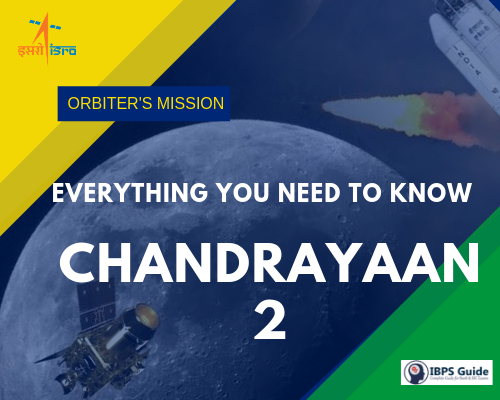Chandrayaan 2- India’s Second Moon Mission:
India’s first moon mission Chandrayaan 1 was launched in the year 2008. It carried out detailed water research on the lunar surface. After that, now in 2019, India launched its second moon mission Chandrayaan 2. The Chandrayaan 2 satellite was launched on July 22, 2019, from the Sathish Dhawan space center in Sriharikota. The mission was to land the vehicle to explore the south pole of the moon. The south pole was the least explored area on the lunar surface.
Important Components of Chandrayaan 2:
No other countries have tried this lunar south pole mission. From the day we have launched Chandrayaan 2, the sight of the total world countries has turned to us. The Chandrayaan 2 was launched with the most powerful rocket GSLV Mark III (Geosynchronous Satellite Launch Vehicle Mark III). The weight of GSLV Mark III is about 640 tonnes. It has three-stage engines to carry the satellite. The first stage consists of two strap-on rocket boosters. The second stage consists of two Vikas engines. The third stage consists of a cryogenic engine. The three important modules of Chandrayaan 2 are,
- Orbiter
- Lander
- Rover
Orbiter: The total weight of the orbiter is about 2379 Kg. Also, the lifetime of the orbiter is one year. The orbiter will revolve around the lunar orbit and communicate with the space center on the earth.
Lander: The name of the lander is Vikram. It is named after the founder of ISRO, Vikram Sarabhai. The weight of the lander is about 1471 Kg. the lifetime of the lander is just 14 days. The lander carries the rover to analyze the lunar soil. The lander also communicates with the space center on the earth.
Rover: The name of the rover is Pragyan. The rover weighs about 27 Kg. It is the robot that can travel up to half a kilometer from the lander. It communicates with only the lander.
The Journey of Chandrayaan 2:
- On July 22nd of 2019, the Chandrayaan 2 was launched with GSLV Mark III.
- There were five orbit manoeuvers around the earth. After detached from the rocket, the Chandrayaan 2 module will move around and rise up to the consecutive orbits. on July 6th it reached the final orbit manoeuver.
- On August 14th, by the translunar injection process, the scientists created the trajectile for Chandrayaan’s travel towards the moon.
- On August 20th, the Chandrayaan 2 enters the lunar orbit.
- In lunar orbit, there are four-orbit manoeuvers. On September 1st, the Chandrayaan 2 enter the final orbit closer to the moon.
- Then on September 2nd, the lander Vikram was separated from the orbiter.
- On September 7th, the contact with the Vikram lander was completely lost. The contact was lost just before 2.1 Km from the lunar surface.
Collect Monthly Current Affairs Capsule – Free Download
In just 2.1 Km distance India missed the milestone by a whisker. But these will be the learnings for the next feat. Reaching near the south pole of the moon itself is a great achievement for our country. So let us be proud of this great feat done by our scientists. In the future, we might be able to achieve such great missions with ease.
Free Mock test Series:






